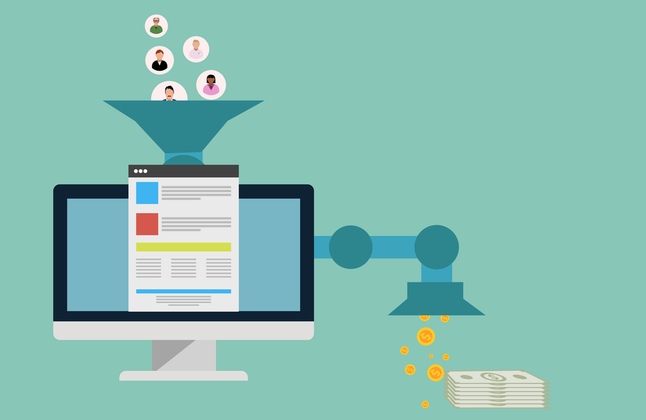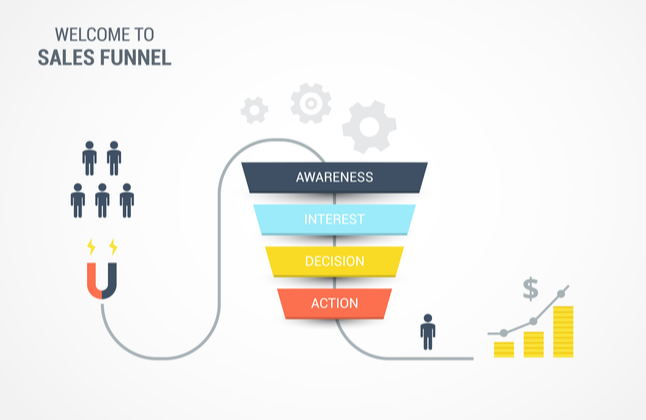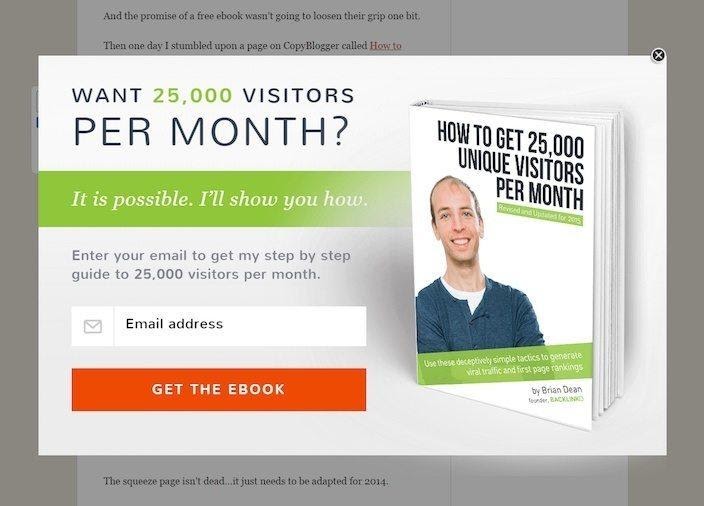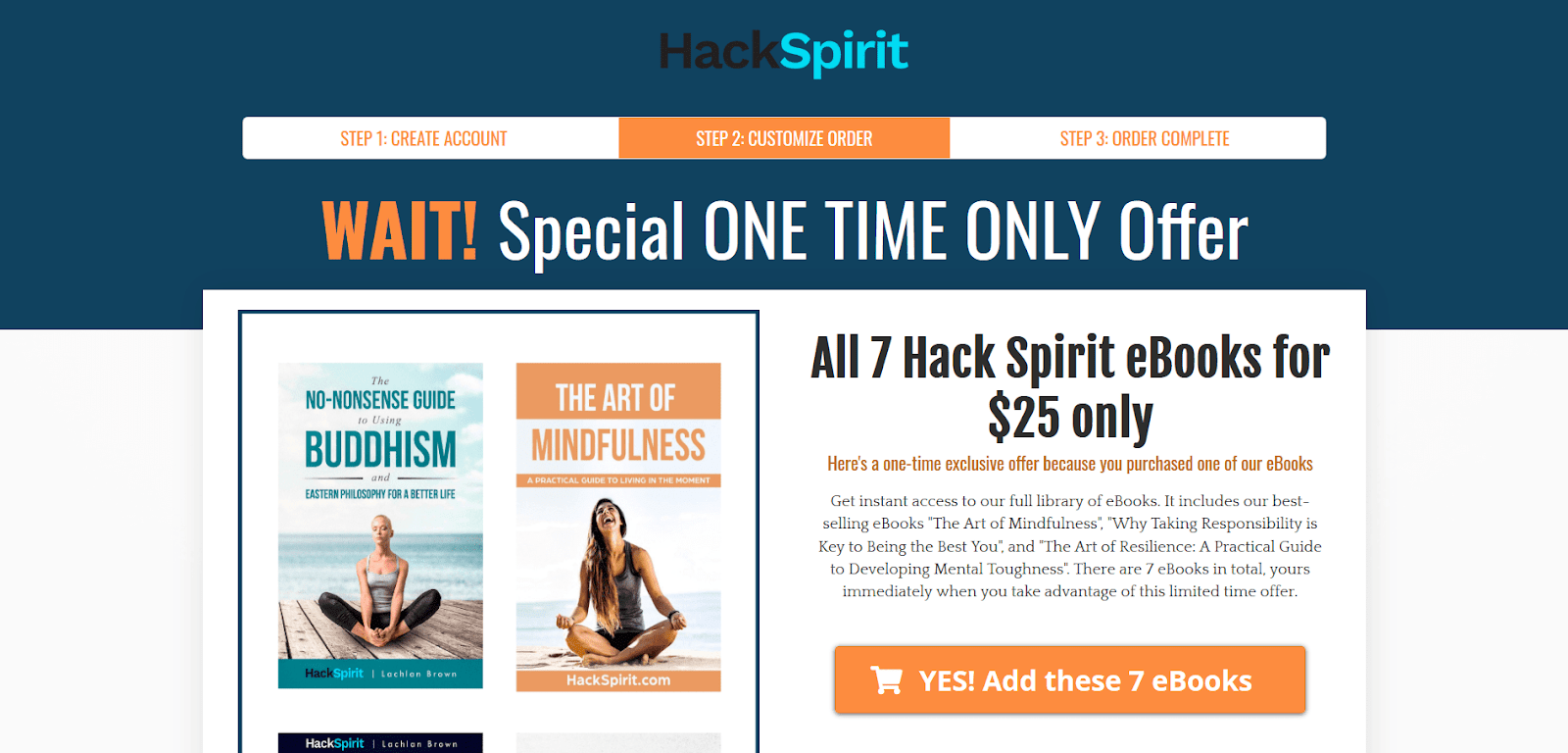
If you want to be a successful writer, it helps to be a savvy marketer.
Successful writers may not be more talented than you. Or have better connections.
They simply know how to market their books effectively. And one increasingly popular way to do this through sales funnels.
Today, I’m going to introduce you to the concept of sales funnels to sell your own books and products.
I will also demonstrate how I increased my eBook sales by 110% after introducing a funnel.
And did I mention that sales funnels are an automated process that requires minimal effort to maintain?
Let’s get started!
What Is a Sales Funnel?
A sales funnel is a process that leads prospects towards your product, eventually turning them into paying customers.
Approximately 96% of visitors who land on a website aren’t ready to buy yet. If you don’t have a plan in place to connect with the vast majority of your visitors, you’re losing out on a lot of potential customers.
A sales funnel is an excellent way to capture the interest of 96% of your readers and warm them up into becoming a customer.
Here is the basic outline of a sales funnel:

At the top of the funnel, we have our general audience. You can see that as we work our way down the funnel, the number of prospective buyers begins to decrease.
While the number of buyers decreases, the chance of making a sale increases a lot.
There are two different types of sales funnels that work particularly well for writers:
- Collecting emails using a squeeze page
- Upselling multiple products
Collecting Emails Using a Squeeze Page
If you only have one book or product to sell, a squeeze page or popup where you collect email addresses will be the most effective strategy for you.
Email lists are crucial for anyone who sells a product online, including writers and authors.
In fact, for every $1 spent, email marketing delivers an astounding $38 in ROI.
So, what makes a squeeze page unique to other pages on your website?
A squeeze page has one goal: to collect your visitor's email address.
Squeeze pages don’t contain links to other pages and are short and concise.
Here’s an example of a squeeze page from Brian Dean of Backlinko:

As you can see, it’s nice and simple with nothing more than an area to enter your email address and the freebie he’s bribing you with.
To create an effective sales funnel via a squeeze page, you will need:
1. A quality piece of content to get traffic
The internet is such a crowded place that you always need quality content to attract traffic. In this case your piece of content will relate to your book, such as a blog post, video, or how-to guide.
2. An opt-in or freebie
This is something your audience will get in return for providing their email address. In the example above, Brian Dean is offering an expert guide. Again, this should be related to the overall topic of what you will eventually be selling.
3. An email service provider
You need this to collect emails and deliver the freebie.
4. Something ultimately to sell
In this case, your book!
So how do you use this process to generate sales?
When a visitor first lands on your piece of content, such as your blog post, they are at the “awareness” phase in the sales funnel.
In other words, they aren’t going to buy anything during this stage, and you need to find a way to guide them from the top of the funnel and turn them into a paying customer.
Offering them a free opt-in is the perfect way to do this.
First, when someone enters their email to receive your free opt-in, it’s because they have an interest in the topic, which means you have begun to grow an email list filled with people who are interested in the subject of your book.
Second, this freebie you are offering them is their first chance to get to know your work. If they like the freebie, they will be more likely to purchase from you in the future.
An example of this concept is when grocery stores hand out free samples of new products. When consumers get a chance to sample the new product, they are more likely to buy it in the future if it’s something they enjoy.
Setting up your squeeze page might seem overwhelming, but there are some great platforms to help you set up squeeze pages and manage your email marketing. A couple of the most popular ones are ClickFunnels and Leadpages.
With these platforms, you do not need to know anything about coding, and you can have your squeeze page funnels ready to go in a snap.
You can then use your email list to send out emails regarding your book.
Upselling Multiple Products
If you have multiple books or products, upselling via a sales funnel can be very effective.
If you’re still working on your first book, then the idea of creating multiple products may be daunting.
But remember that not every product has to be a book. Fiction authors can offer novellas, short stories, or short story collections, while non-fiction authors can sell courses and one-on-one coaching.
It’s unlikely that your audience will go from spending $0 to $10+ on a single book without getting familiar with your work first. Which is why upselling is such an effective strategy.
Upselling through a funnel is similar to a squeeze page, but it goes much deeper.
The most effective way is to first offer your customers a low-priced item. Those who purchased (and liked) the low-priced item move down your funnel and you’re able to progressively offer them larger-ticket items.
Bands and artists are a great example to illustrate a real-world example of funnels and upselling.
Most people wouldn’t pay hundreds of dollars to see a band they don’t know. For this reason, most bands upload their music on YouTube, where it can be listened to for free by anyone. At this point, everyone is at the top of the funnel.
However, those who really enjoy the music might decide to purchase something small, such as an EP or an album.
This small purchase moves them down the funnel and closer to a bigger-ticket item.
And after purchasing an album, they might then decide to buy a ticket to watch the band live.
As you can see, everyone started at the top of the funnel and some people eventually made their way down to concert-goers and avid fans.
You can do exactly the same thing for your books or whatever other products a writer can sell (and there are many).
How I Increased My eBook Sales by 110%
One way my website makes money is by selling eBooks on personal development and eastern philosophy.
By introducing a sales funnel 6 months ago, I was able to increase my eBook sales by 110%.
I employed the second of the funnels outlined above: upselling multiple products via a sales funnel.
Here’s how I did it.
The first step in my funnel is to offer a low-priced initial item, which is a single eBook.
After they purchase this, I immediately offer the customer a higher-priced upsell, which is a bundle of all 7 of my eBooks. The bundle costs 70% less than what each eBook would cost individually so the offer is compelling.
Below is a screenshot of my exact upsell:

If they don’t accept the higher-priced upsell, I offer them a lower-priced downsell of two additional eBooks.
Crucially, steps two and three only involve one click from the customer. As they have already entered their credit card details to buy the single eBook, they can add the upsell or downsell to their order through one click.
As you can see, my funnel is really simple. And the key to its success is a compelling upsell. One in three of my customers purchases my upsell, which has increased my average order value from $9 to $19.
I used ClickFunnels to build my sales pages and funnels. As a non-techie with few design skills, the sales pages for my books were extremely easy to create. I was able to set up all the pages in the funnel without wasting any energy on design, optimization or coding.
You can read my full ClickFunnels review here.
Now It’s Your Turn
Automating book sales is something every writer should learn to do.
As an author, if you can automate your sales process, you’ll be able to spend more time writing and engaging with your audience and less time selling.
If you are an author with only one book or product to currently sell, a squeeze page will be the most effective strategy for you.
On the other hand, if you have multiple books or products that you can bundle together, using an upselling funnel will help you turn visitors into higher paying customers.
Good luck!

